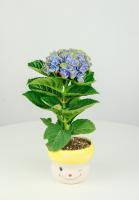Introduction
Breadfruit is a tropical fruit that is native to the South Pacific islands. It was discovered by Captain James Cook during his second voyage to the region in 1773. Cook returned to England with samples of the fruit and recommended it as a food source for the slaves in the British colonies. The fruit eventually made its way to Jamaica, where it would become an important part of the local diet.
Planting the First Breadfruit Tree in Jamaica
The first breadfruit tree was planted in Jamaica by Captain William Bligh in 1793. Bligh was a British naval officer who was on a mission to transport breadfruit trees from Tahiti to the Caribbean. The trees were intended to be used as a food source for the slaves working on the sugar plantations.
Bligh arrived in Jamaica with the trees and immediately set about planting them. The first tree was planted at a location near Port Royal, which was then the capital of Jamaica. The tree was welcomed enthusiastically by the Governor of Jamaica, who saw it as a potential solution to the food shortage problem that was plaguing the island at the time.
The Importance of Breadfruit in Jamaica
The arrival of breadfruit in Jamaica was a turning point in the island's history. Prior to the arrival of the fruit, the island's economy was heavily dependent on sugar, which was grown using slave labor. The introduction of breadfruit as a food source enabled the plantation owners to feed their slaves cheaply and efficiently, which reduced the cost of labor and increased the profits of the plantations.
Over time, breadfruit became a staple food in Jamaica. It was used to make a variety of dishes, including bread, pudding, and porridge. The fruit was also used as a substitute for potatoes and other starchy vegetables.
The Legacy of Breadfruit in Jamaica
Today, breadfruit is still an important part of the Jamaican diet. It is eaten in many different forms, and is often used as a side dish to accompany meat or fish. In addition, there are many traditional Jamaican recipes that feature breadfruit as a main ingredient, such as breadfruit curry and breadfruit fritters.
However, the legacy of breadfruit in Jamaica extends beyond its use as a food source. The arrival of the fruit represented a significant moment in the island's history, and it played a key role in the development of the Jamaican economy. Today, the breadfruit tree is a symbol of the island's resilience and resourcefulness, and it continues to be celebrated by Jamaicans around the world.
Conclusion
The planting of the first breadfruit tree in Jamaica by Captain William Bligh in 1793 was a pivotal moment in the island's history. The introduction of breadfruit as a food source enabled the plantation owners to feed their slaves cheaply and efficiently, which had a profound impact on the Jamaican economy. Today, breadfruit is still an important part of the Jamaican diet, and it continues to be celebrated as a symbol of the island's resilience and resourcefulness.

 how many times do yo...
how many times do yo... how many planted tre...
how many planted tre... how many pine trees ...
how many pine trees ... how many pecan trees...
how many pecan trees... how many plants comp...
how many plants comp... how many plants can ...
how many plants can ... how many plants and ...
how many plants and ... how many pepper plan...
how many pepper plan...





























